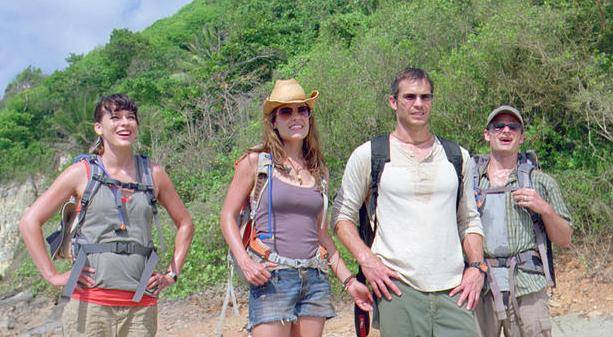
Writer/Director David Twohy’s films will never be confused for high art. Actually, the word “films” is a bit of a misnomer in referring to his work — “movies” is more accurate — yet there’s no denying they’re a great deal of fun. I’d be hard pressed to come up with an accurate way to measure just how much popcorn has been consumed by those who’ve seen The Arrival, a fun sci-fi alien conspiracy flick with Charlie Sheen, Below, a genuinely creepy submarine ghost story and The Fugitive, all films that Twohy’s had a hand in writing and/or directing. While some might refer to his work as glorified B-movies, their overall entertainment factor cannot be denied.
His latest, A Perfect Getaway is a taut thriller that’s hardly getting the press or audience it deserves. This tale of a serial killer that preys on newlyweds in Hawaii provides more suspense than any film released this summer and is better made than movies sporting budgets five times larger than what was spent on this. No doubt, it’s silly at times and requires the viewer to take more than a few large narrative leaps – which is part of the fun – but Twohy’s sure hand behind the camera results in a well-directed feature in which film-making fundamentals are used to entertain. 
Cliff and Cydney (Steve Zahn & Milla Jovovich) are newlyweds who are eager to take on the hiking trials of Hawaii’s national parks, wanting to spend their honeymoon roughing it in paradise. Somewhat naive about what they’re about to undertake, they begin to have second thoughts about their plans when another young couple is found slaughtered, their fingernails removed and their teeth pulled out to prevent the bodies from being identified. Equally disconcerting is the fact that a seedy couple — Kale and Cleo (Chris Hemsworth & Marley Shelton) — keeping crossing their path at suspicious moments. They seem to find a bit of salvation with Nick and Gina (Timothy Olyphant & Kiele Sanchez), who are hiking the same trails they are, but when it appears as though they might be the killers in a surveillance picture that is released by authorities, Cliff and Cydney finds themselves watching their back every step of the way.
No one is quite who they seem in the film and the movie itself is deceptive. As it progresses, you realize that Twohy is taking a post-modern look at the thriller genre, mentioning conventions present in these sorts of films and then taking them to extremes. Nick goes out of his way to give unsolicited advice to screenwriter Cliff by saying that a good second act plot twist is necessary for the success of every film. Sure enough, Twohy has a dozy of a narrative switcheroo here, so much so that it nearly derails the film as you become preoccupied with trying to figure out if it actually makes sense. For the record, I’m not quite sure it does, but that’s beside the point -— this is a movie-movie, made to entertain in the Hitchcock tradition and it succeeds on its own merits.
What’s most refreshing about the film is that it employs few special effects and its suspense is generated using the most basic of filmic elements, namely solid acting, clever writing and inventive editing. The cast is well aware of the tone they need to establish to make this exercise a success and they all deliver. While it seems like odd casting to have Zahn and Jovovich as young marrieds, as the film progresses the logic of it becomes obvious. Olyphant’s trademark intensity holds him in good stead as the ex-military who’s hard to kill, while Sanchez proves strong enough to stick with him.
However, in the end it’s Twohy who pulls it all together. Once the film’s twist is revealed, he resorts to a washed-out palette in which he challenges the viewer to stick with him as he goes through flashbacks, flashbacks within flashbacks and conflicting memories between characters. The most thrilling moment in the film is a foot chase involving three characters where Twohy cuts back and forth between them, then visually melds them together by seemingly cutting the film into pieces before us until the screen is cut into three parts so that we might chart the progress of all involved. Not an expensive technique nor a difficult one to pull off, yet it generates thrills the audience can see and appreciate, unlike the visual vomit on display in Transformers 2 and G. I. Joe.
In the end, it’s obvious Twohy knows how to make a film by adhering to the basics. How sad that this has become an underappreciated skill that moviegoers are overlooking, opting instead to bludgeoned by a movie rather than truly engaged by one.








